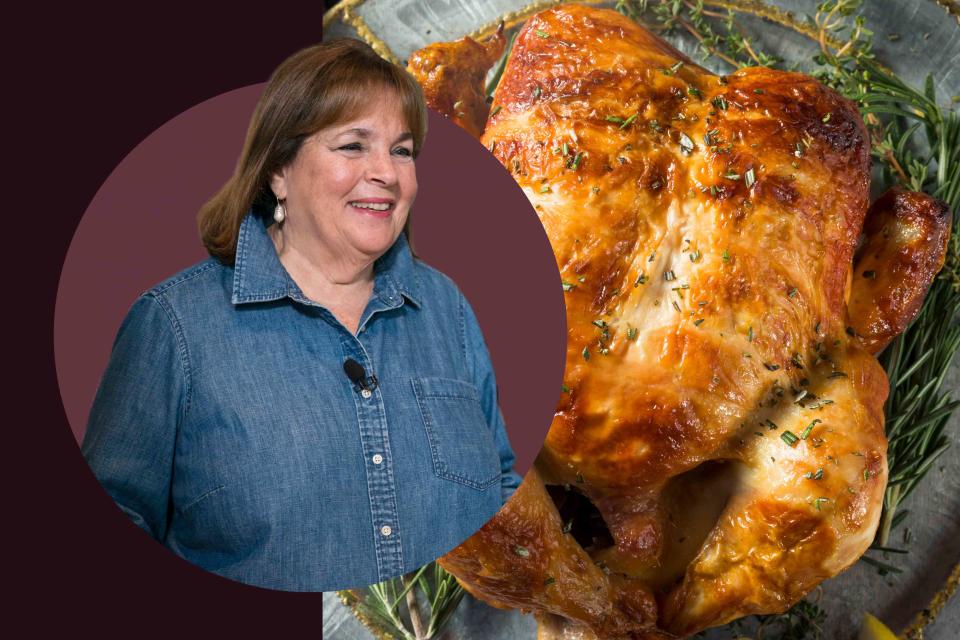Ina Garten Says You Should Undercook Your Chicken — Here's Why
Ina knows what she's doing.

First and foremost, Ina Garten is a national treasure, and we trust everything she says. So, when she says to undercook your chicken, it’s worth giving a go.
“No one wants to serve dry chicken, so these are my tips for flavorful, moist chicken breasts,” Garten captioned a recent Instagram video. “Cook the chicken with the skin on, undercook it slightly, and let it rest (and keep cooking) under a sheet of aluminum foil. You won’t believe what a difference this makes!”
Importantly, Garten noted it’s a good idea (we say critical) to have a meat thermometer handy if you want to attempt this for yourself.
Related: 10 Tips from Ina Garten That Improved the Quality of My Life
“If you have a meat thermometer, take the chicken out when its internal temperature reaches 155 to 160 degrees,” she wrote. “It will keep cooking to 165 degrees as it rests under the foil, at which point it will still be hot and fully cooked.”
Though the tip might feel wild to some, it’s a well-known method for professional chefs known as “carryover cooking.”
“It’s not a misguided notion,” Cheryl Slocum, senior editor at Food & Wine (and low-key James Beard Award-winning food writer), shares. “It’s called residual cooking (or carryover cooking), and we always factor that in when we are cooking chicken, turkey, and other meat proteins.”
Slocum adds, chefs often account for how much the internal temperature of the meat will continue to rise after it is pulled off the heat, adding, “It is true for grilling, roasting, even stovetop cooking.”
As for how to do this method and ensure top-notch taste, Slocum suggests not cutting into the meat right when it comes off the heat, just like Garten says. “The juices will run out, and you’ll end up with dry, dry meat,” Slocum says. “Lightly tenting the meat helps to keep in the heat from the dish, but make sure you don’t cover it too tightly — you’ll build up moisture, and that will impact any crispy or seared crusts you may have established for the meat cut.”
And, both Garten and Solcum say, it’s vital to ensure the meat hits that 165-degree mark after the the temperature has finished rising. As Poison Control explained, “Raw chicken, including frozen uncooked chicken products, must be cooked to an internal temperature of at least 165 degrees Fahrenheit in order to kill foodborne bacteria such as Salmonella.” It, too, explained that you can reduce the risk of foodborne illness by using a food thermometer when cooking poultry and other meat products. The Centers for Disease Control and Prevention also say 165 degrees is the number to hit and added that people can take additional steps to protect against foodborne illness, including washing hands “with soap and water for at least 20 seconds before and after handling raw chicken,” and refrigerating or freezing leftovers within two hours. Want even more advice on the perfect chicken? Of course, there’s always Garten’s Insta, but here are 5 tips that can make or break your next dinner just in case.
For more Food & Wine news, make sure to sign up for our newsletter!
Read the original article on Food & Wine.


